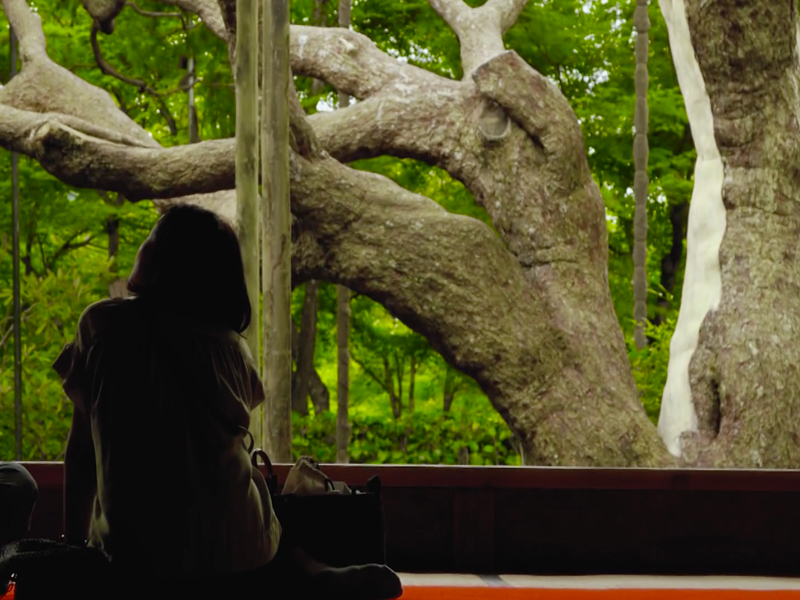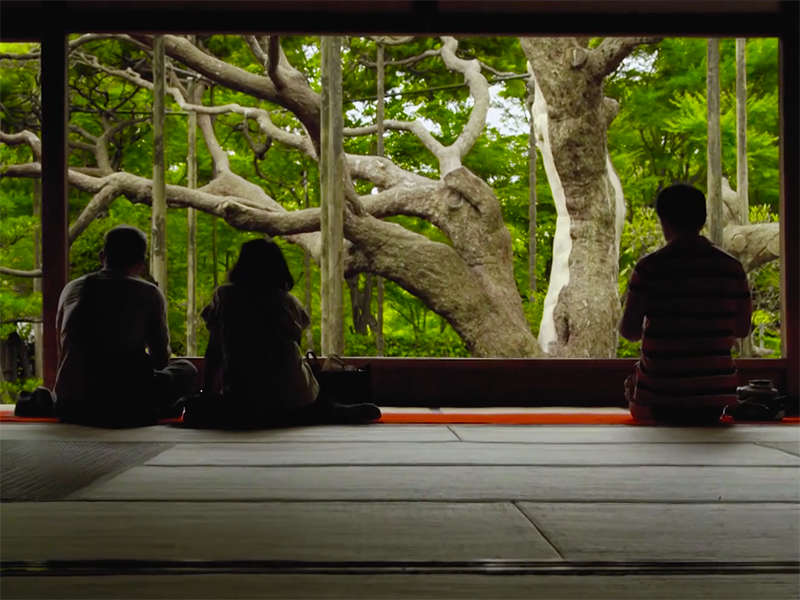Hosenin is a temple in Ohara district in Kyoto that holds many mysteries and delights of natural beauty. From the garden view framed by temple pillars and ceilings to the soothing sound of water dripping against a buried jar, to the traces of blood on the ceiling left behind by fallen samurai, Hosenin is a fascinating place to explore no matter where your interests lie.
Surround Yourself with Natural Beauty
One of Hosenin Temple’s mainstays is its large pillars, which together with the wooden floors and ceilings create a framed image of the garden. When looking out at the garden from the inside, it makes a picture-perfect image combining natural beauty with man-made artistry. The garden’s name, Bankan-en, means “difficult to depart” and is true to its name as it’s hard to leave a view as beautiful as this.
One of the temple’s most famous symbols is a 700-year-old Japanese white pine tree, which greets visitors as they enter the grounds and is surrounded by a deep green forest and bamboo grove. It’s visible from most areas around the temple, drawing your eyes to its magnificent presence at every turn. The whole expanse exudes an atmosphere of a classic Japanese-style garden, offering soothing forest bathing effects.
Experience Hosenin Temple Through All Your Senses
Visiting Hosenin Temple is a truly immersive experience for all the senses. Enjoying the garden by sight is a given, but make sure to listen closely, too. The temple houses a suikinkutsu, a type of garden ornament that also serves as a musical instrument. Water drips from above ground on to an upside-down jar buried underground, creating a pleasant splashing sound that rings out into the air. Hosenin Temple’s suikinkutsu is particularly rare as it is a double one, with two jars instead of one.
The entrance fee here includes a matcha set, allowing you to enjoy a traditional tea time through taste, sense of smell and touch. Take a bite out of a sweet supplied exclusively for the temple by famous confectionary store Wakasaya Suenori as you relax and take in the view.
 Uncover Japan’s Bloody History on the Ceiling
Uncover Japan’s Bloody History on the Ceiling
Hosenin Temple isn’t just beautiful — this historic temple from the 11th century hides many secrets and displays others very visibly. In 1600, Ieyasu Tokugawa garrisoned Kyoto’s Fushimi Castle which was under siege by a group led by Mitsunari Ishida. Tokugawa fled to continue his battle campaigns elsewhere while his vassal Mototada Torii and other followers held off the attackers for 11 days. Ultimately, Tokugawa’s troops lost the siege. As they surrendered, the remaining 10 vassals committed ritual suicide, their blood soaking through the floorboards. The castle was badly damaged by the attack, so instead of rebuilding it, the wooden floorboards and other items were repurposed and distributed to temples in the area. Hosenin Temple is one of those, and visitors can see bloody footprints on the bloodstained wooden boards that now serve as a ceiling in one area of the temple.
For Hosenin Temple’s address and contact info, see our Concierge Listing
https://test3.tokyoweekender.com/2018/10/hosenin-temple/









